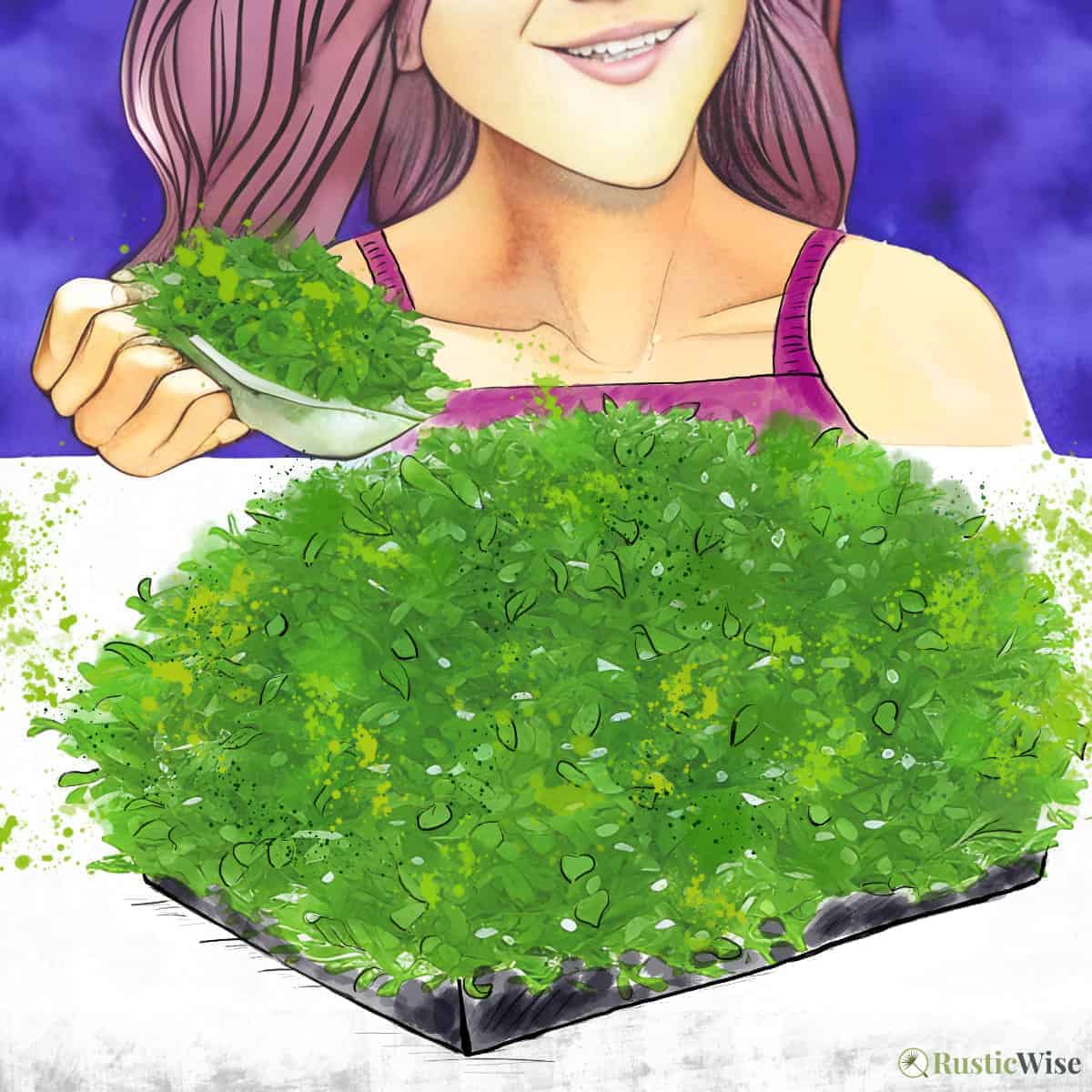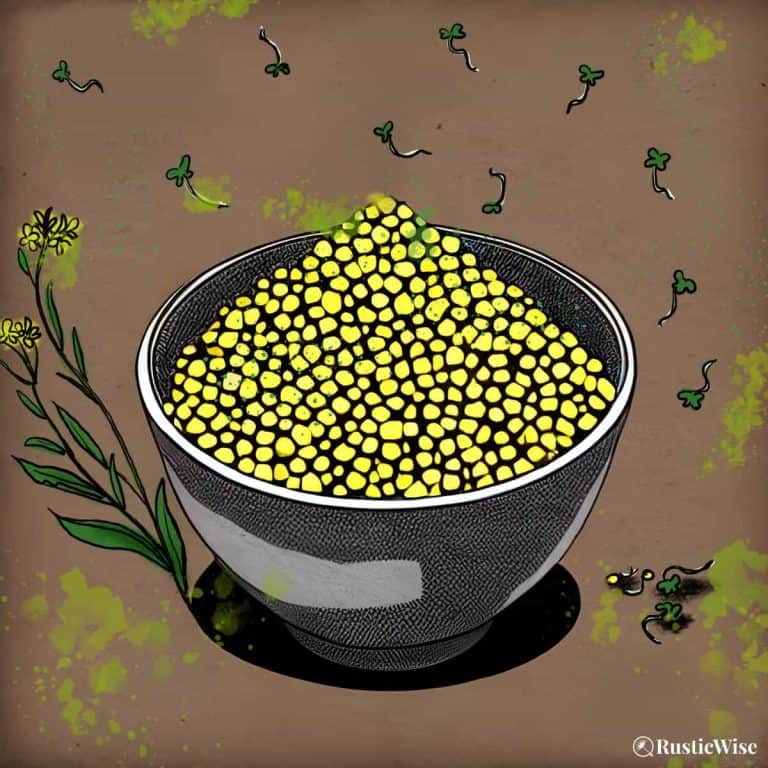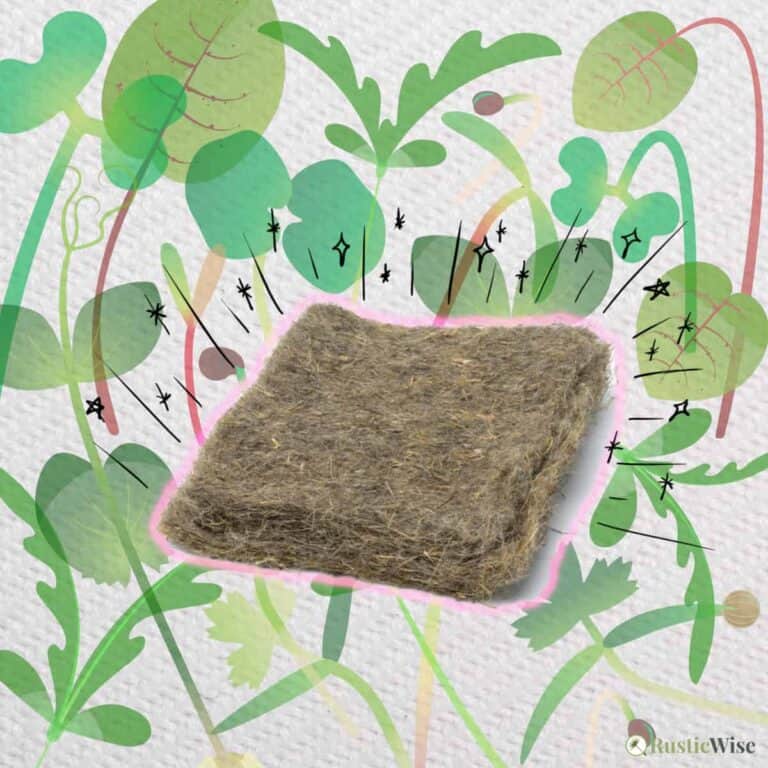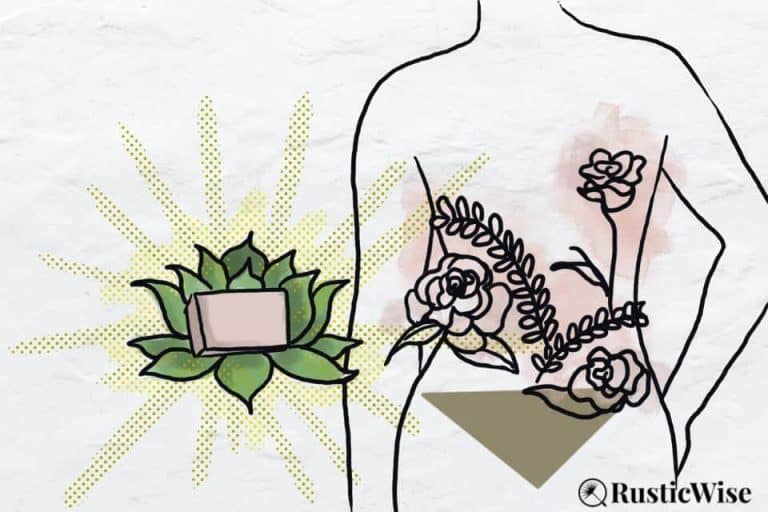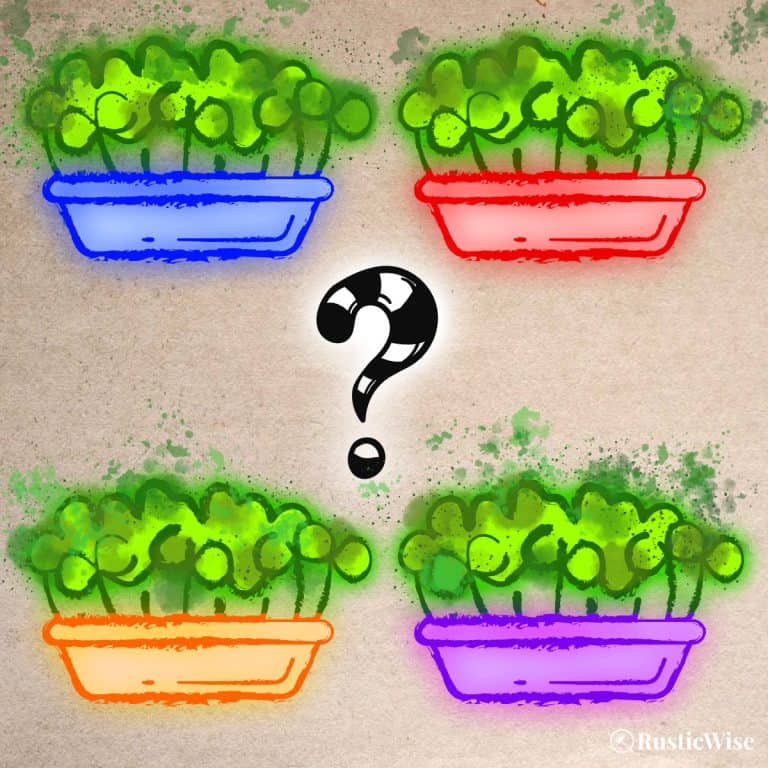Can You Eat Microgreens Raw? And Will They Make You Sick?
Foodborne illnesses and salmonella outbreaks in raw produce dominate headlines. So it’s no surprise if you have concerns about eating raw microgreens.
If you’re wondering, can you eat microgreens raw the short answer is, yes. These tiny seedlings are often confused with sprouts which are linked to many commercial salmonella outbreaks. Micros are grown in a different manner than sprouts and are less susceptible to foodborne illness. When grown in a sanitary environment using quality seeds and harvested properly, microgreens should be safe to eat raw.
Microgreens are a tasty and nutritious addition to meals with many health benefits. Let’s look at food safety plus the key differences between micros and sprouts. If you choose to eat micros lightly cooked, I have some food prep tips for you. Plus, I’ll also go over which types of microgreens can actually make you sick.
Can you eat microgreens raw without getting sick?
Yes, microgreens are generally safe to eat raw. If the tiny seedlings are grown in a controlled and sanitary environment, the possibility of getting food poisoning caused by Salmonella or other pathogens is low.
In fact, eating micros raw is the preferred way to consume them. Uncooked micros retain their vitamins and nutrients, as well as their delicate texture.
The takeaway: While the risk of getting sick is low for most micros, it exists. Therefore, good microgreens food safety practices are vital if you’re growing at home, or if you’re purchasing them from a supplier.
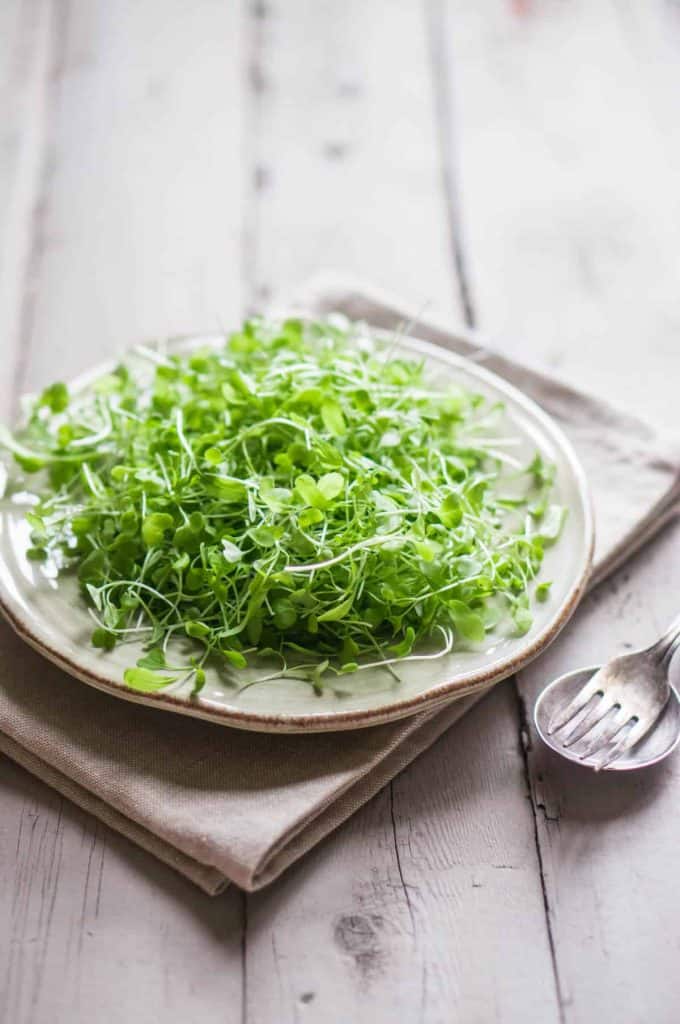
Microgreens are different from sprouts
Most of the uproar about food safety is linked to sprouts, not microgreens.
Since 1996, the U.S. Food and Drug Administration (FDA) has reported around 50 sprouts outbreaks. This has resulted in over 2,500 cases, 179 hospitalizations, and sadly, 3 deaths. The most common pathogen attributed to the outbreaks is Salmonella. This is followed by E. coli, and less commonly, Listeria.¹
The sprouts most linked to foodborne illnesses are (in order from greatest number of occurrences to fewest): alfalfa sprouts, clover sprouts, mung bean sprouts, and finally sprouted chia powder.¹
While the terms “sprouts” and “microgreens” are often used interchangeably, these two forms of young plants are NOT the same. Let’s look at a few key differences:
- Sprouts are grown in dark, moist, and humid conditions which are more prone to developing harmful bacteria. They are grown without any soil. You eat them whole: seed, root, and shoot.
- Microgreens are grown in a growing media in conditions with more light and airflow. You harvest micros above the soil, leaving the root behind.
While sprouts and micros share many of the same qualities, microgreens also have similarities to fresh produce in the manner it’s grown (in soil or a soilless growing media).
Have microgreens been linked to outbreaks or recalls?
To date (and to my knowledge) there have been no known microgreen outbreaks related to pathogens. However, there have been several product recalls.
One such recent recall occurred in Ontario, Canada, in November 2021, where several microgreens products were recalled due to possible Salmonella contamination. The recall was issued by the manufacturer and there are no reported illnesses.²
Are raw microgreens safe to eat for everyone?
Generally, yes, raw microgreens are safe to eat when fresh, and if grown and handled in a safe manner. Just like other fresh produce, it’s a good idea to give micros a quick rinse to remove any dirt, debris, or bacteria before consuming.
If you are concerned about eating raw micros, you can lightly cook them first.
While the CDC strongly recommends cooking sprouts before eating to avoid foodborne illnesses, it does not state such guidelines for microgreens.
Safety note: The CDC recommends that some people avoid eating raw sprouts. This includes pregnant women, the elderly or very young children, and those that are immunocompromised.³
Why microgreens are often safer than sprouts
While it’s fair to say that both sprouts and microgreens (and in fact most types of fresh produce) can potentially cause sickness, generally, microgreens are safer than sprouts.
Micros have fewer risks in terms of food safety. They are grown in a more sanitary environment which removes a lot of the risk of foodborne illness. Microgreens require sunlight (or artificial lights) which can reduce the amount of pathogens that develop. Most micro growing environments also require adequate airflow which prevent mold or fungal issues.
Sprouts, on the other hand, are grown in damp, dark conditions, which increases the risk of microbes developing in the seedlings. The repeated rinse and drain cycles that are part of the sprout growing process can introduce harmful bacteria if unclean water is used, or if not properly drained.
Contaminated seeds caused many of the sprout outbreaks, letting bacteria infect the sprouts.
Note: We grow microgreens at home (along with sprouts) and have never gotten sick. With proper food practices, you can enjoy growing your own fresh produce right on your countertop, without getting ill.
How do microgreens get contaminated?
Contaminated microgreens are a rare occurrence that won’t happen to everyone, but with proper safety precautions taken during the growing process, you and your crops should be fine.
There are several points at which microgreens may develop harmful pathogens. A good way to ensure food safety is to follow the advice below:
- Contaminated seeds: I can’t stress enough the importance of starting your crops with quality, untreated seeds. Many suppliers of microgreen seeds test their batches to ensure they’re free of harmful pathogens like Salmonella and E. coli. Using poor quality seeds will not only affect germination rates, it can mean the difference between a fresh, healthy batch of micros, or one that lands you in bed (or worse).
- Unclean water: It’s vital that you use clean water when growing micros. It should be of drinking quality at a bare minimum. Many growers use filtered water. If you’re bottom watering your greens, make sure you dump out excess water after each soak to prevent bacteria from growing.
- Reused growing medium: I never recommend reusing your soil, soilless mix, or other growing medium to prevent mold or bacteria problems in the next batch. Once the growing medium has been used once, the tiny roots are left behind which are very difficult to remove. The leftover roots can rot and cause problems with your next batch. So, toss that used soil in the compost, and save yourself some trouble.
- Cross-contamination from supplies and equipment: It’s always a good idea to clean all grow trays and tools between cycles to prevent any cross-contamination. At a bare minimum, use soap and water. To take it up a notch, you can use hydrogen peroxide.
- During harvesting and storage: As micros are harvested just above the soil line, the cuts can introduce bacteria if an unclean, or dull blade is used. Always make sure your knife or shears are kept clean and sharp. Refrigerate harvested micros as soon as possible.

These microgreens can make you sick (really!)
Can some microgreens make you sick? Absolutely. There are some micros that should be avoided altogether. Some should be eaten in moderation.
Let’s take a look at some potentially toxic greens.
Nightshade microgreens
While there are many types of edible vegetables, herbs, legumes, and grains to sprout as microgreens, there are some that should be avoided altogether.
This is especially true of plants that belong to the nightshade family. This includes tomatoes, potatoes, peppers, eggplant, and goji berries. While the fully mature crops are perfectly safe to eat, the young microgreens contain solanine and tropanes which are toxic.
Look up “solanine poisoning” and you’ll see for yourself.
Buckwheat microgreens
Sometimes you can have too much of a good thing. Such is the case with buckwheat micros. While not toxic when eaten in moderation (they’re actually quite tasty!), you should not go overboard with this type of micro.
During early stages of growth, the buckwheat plant contains fagopyrin, a compound that can cause skin phototoxicity and rashes when eaten in large quantities. (Interestingly, buckwheat groats (sprouts) don’t have this same problem.)
So enjoy a small bite of buckwheat microgreens, but don’t go making a giant green smoothie with them!
Best ways to cook microgreens
Microgreens are not only a nutritious way to brighten up your meal, but they also bring something special to the overall flavor. Microgreens are a treat that you can grow yourself, or pick up at your local farmer’s market.
If you’d rather cook micros than eat them raw, there are a few things you should know.
Since micros are generally delicate with thin stems and small leaves, they rarely hold up well under heat. Here are a few tips on cooking with these tiny greens:
- Don’t overcook: When cooked at high heat, or for longer than a minute or two, microgreens will wilt and turn mushy.
- Add during the last few minutes of cooking: To avoid overdoing it, sprinkle a small handful of micros during the last several minutes of cook time. Add to soups, stews, sauces, and omelets.
- Lightly sauté: One of the best ways to cook micros is over medium-low heat. Drizzle a bit of oil and quickly heat and turn. Remove from heat immediately.
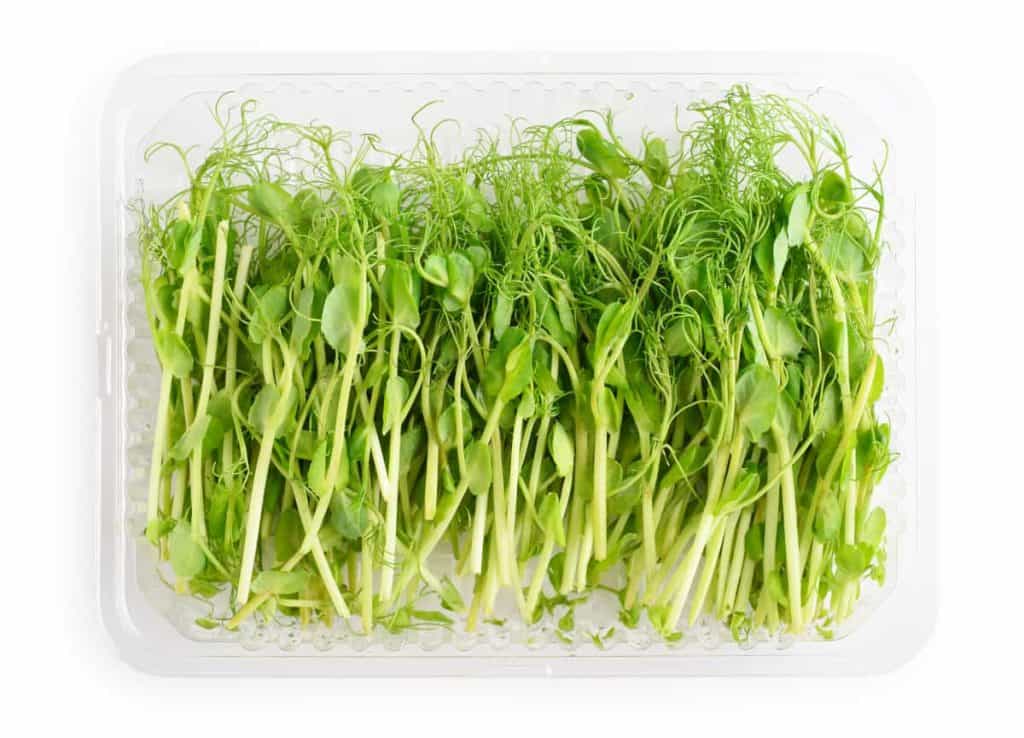
Credit: Deposit Photos
Best microgreens to cook
One of the best microgreens to cook is pea shoots. Unlike most other types of micros, pea microgreens grow larger (often past the true leaf stage), and are quite substantial. This is one microgreen that’s not so small and delicate.
Plus, pea shoots have a fresh and sweet flavor (they taste like snap peas!) that pairs well with Asian cuisine, and stir fry dishes.
Another larger and heartier variety is sunflower microgreens. With a sweet and nutty flavor, sunnies can withstand a bit of heat.
Does cooking microgreens zap nutrients?
There is some nutrient loss when cooking microgreens, particularly vitamin C loss. Many people prefer to eat micros raw to preserve their water-soluble nutrients and enzymes.
However, cooking vegetables is not necessarily a bad thing. While there may be some change in the nutrient content, cooked microgreens still remain a healthy food. It can introduce a new way to eat food and make microgreens safer for some vulnerable populations.
Some studies point that cooking some types of (fully-grown) vegetables such as asparagus, cabbage, mushrooms, spinach, and peppers may introduce higher levels of carotenoids and ferulic acid over their raw counterparts.⁴
Final thoughts: can you eat microgreens raw?
Microgreens are very nutritious and safe to eat raw when properly grown in sanitary conditions and under careful procedures to ensure food safety. It’s always a good idea to wash them before eating. If you prefer, you can also lightly cook micros before eating.
Never eat any microgreens that belong to the nightshade family (raw or cooked) as these contain high levels of solanine, which is toxic.
👉 If you like this post, see our Complete Guide to Growing Microgreens at Home. 🌱
Would you like more timeless tips via email?
Fun tips to help you live an independent, self-sustaining lifestyle. Opt-out at any time.


References
- Kathleen Gensheimer, MD, MPH, FIDSA, Diane Gubernot, DrPH, MPH, FDA, 20 Years of Sprout-Related Outbreaks: FDA’s Investigative Efforts, Open Forum Infectious Diseases, Volume 3, Issue suppl_1, December 2016, 1438, https://doi.org/10.1093/ofid/ofw172.1140
- Government of Canada, Certain Broadwood Farm brand microgreens recalled due to Salmonella, https://recalls-rappels.canada.ca/en/alert-recall/certain-broadwood-farm-brand-microgreens-recalled-due-salmonella. Accessed January 2023.
- Centers for Disease Control and Prevention (CDC), Advice to Consumers & Retailers, https://www.cdc.gov/salmonella/reading-08-16/advice.html. Accessed January 2023.
- Scientific American, Fact or Fiction: Raw Veggies are Healthier than Cooked Ones, https://www.scientificamerican.com/article/raw-veggies-are-healthier/. Accessed January 2023.

Author: Josh Tesolin
Josh is co-founder of RusticWise. When he’s not tinkering in the garden, or fixing something around the house, you can find him working on a vast array of random side projects.

